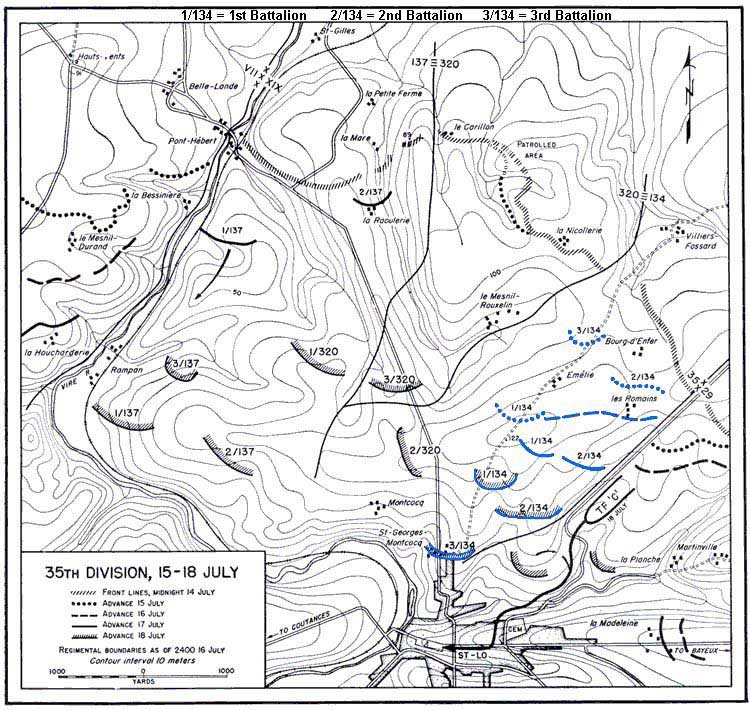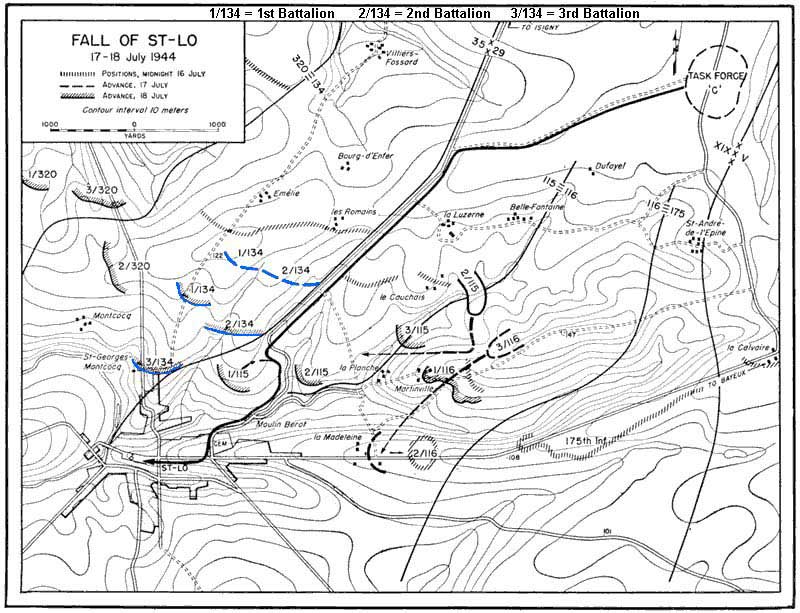 |
134th Infantry Regiment"All Hell Can't Stop Us" |
 |
 |
134th Infantry Regiment"All Hell Can't Stop Us" |
 |
NORMANDY, FRANCE 15, JULY 1944
Nebraska's 134th Infantry regiment, part of the 35th Infantry Division from Kansas, Nebraska, and Missouri, reported for active federal service in December 1940. Following three years of extensive stateside training, the 134th sailed for England in May, 1944. On 5 July, one month after D-Day, the regiment landed at Omaha Beach and moved swiftly inland with the rest of the 35th Division. The 134th waited in reserve as the U.S. V and XIX Corps struggled to liberate the vital town of St. Lo. Strong German positions atop Hill 122 north of the city had all but stopped the attack of the combat-weary and understrength 29th Division, which had assaulted Omaha Beach one month before, and the 30th Division, which had been in combat almost as long. On 11 July, the 35th joined in fellow National Guard divisions in the fight for St. Lo and quickly discovered the special difficulties posed by the formidable tangles of rock, earth, and trees called "hedgerows." Used all over Normandy to separate farmers' fields, the Germans had reinforced these natural defensive barriers. For four days, the 35th Division's 137th and 320th Infantry Regiments made difficult progress against the hedgerows on the lower slopes of Hill 122. On 14 July, the 134th Infantry, commanded by future chief of the National Guard Bureau, Butler B. Miltonberger, received orders to secure the hill. The Cornhuskers began their attack early on 15 July, and after taking the fortified farmhouses in the hamlet of Emilie in fierce fighting, reached the upper slopes of Hill 122 by nightfall. With the 1st Battalion leading the 134th advanced despite withering small arms and artillery fire. Upon reaching the crest of Hill 122, the Nebraskans repulsed a determined counterattack and supported by other divisional elements, launched a final counterattack of their own. Their capture of this vital hill opened the way for the liberation of St. Lo itself on 18 July. The 134th Infantry had lived up to its Spanish-American War battle cry, "All Hell Can't Stop Us," and the 1st Battalion was awarded the Presidential Unit Citation. But the cost has been high: The regiment suffered 35 percent casualties in two days, including 102 men killed, 589 wounded, and 102 missing.


| View My Guestbook | Return to Regimental History Index
Return to Battle Sites and Monuments Index |